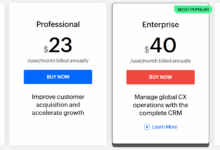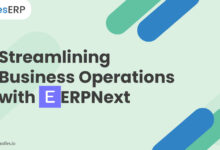CRM System Pricing – Navigating The Costs And Options
CRM system pricing sets the stage for this enthralling narrative, offering readers a glimpse into a story that is rich in detail and brimming with originality. From factors influencing pricing to hidden costs and negotiation tactics, this topic delves deep into the world of CRM system costs and considerations.
Factors influencing CRM system pricing
When considering the pricing of a CRM system, several key factors come into play that can impact the overall cost for a business. Understanding these factors is crucial for making an informed decision on which CRM solution is the best fit for your organization.
Key Features Impacting Pricing
- Advanced automation capabilities
- Integration with third-party applications
- Customizable dashboards and reports
- AI and machine learning functionalities
Customization Options and Pricing
- Customization can lead to higher costs due to development work
- Pre-built templates may offer more affordable options
Pricing Models
- One-time payment for perpetual license
- Subscription-based pricing for ongoing access and updates
Business Size and Scale
- Smaller businesses may opt for more affordable CRM solutions
- Enterprise-level organizations may require more complex and expensive systems
Additional Costs
- Training and implementation costs
- Support and maintenance fees
- Data migration expenses
Integration with Other Software Solutions
- Compatibility with existing tools can impact pricing
- API access for seamless data exchange may come at an additional cost
Industry-Specific Requirements
- Regulatory compliance features may increase pricing
- Specialized functionalities for specific industries can add to the cost
Vendor Reputation and Support Services
- Established vendors with strong support may charge premium prices
- 24/7 customer service and technical assistance may affect pricing
Data Storage and Usage Limits
- Larger storage capacities and higher usage limits can lead to increased costs
- Overage fees for exceeding usage thresholds may apply
Types of CRM pricing models
CRM providers offer various pricing structures to cater to different business needs and budgets. Understanding the different models can help businesses make informed decisions when choosing a CRM system.
Pay-per-user pricing
Pay-per-user pricing is a common model where businesses pay a set fee for each user accessing the CRM system. This pricing structure is straightforward and easy to understand, making it suitable for small to medium-sized businesses. However, as the number of users increases, so does the cost, which can make it expensive for larger organizations.
Tiered pricing vs. Usage-based pricing
Tiered pricing involves different pricing tiers based on the features and functionalities offered. Businesses can choose a tier that aligns with their requirements and budget. On the other hand, usage-based pricing charges businesses based on the resources consumed, such as the number of contacts managed or storage used. This model can be cost-effective for businesses with fluctuating needs but may be challenging to predict costs accurately.
Implications of free CRM software
The availability of free CRM software in the market has disrupted the traditional pricing models. While free CRM software can be an attractive option for businesses with limited budgets, it may come with limitations in terms of features and support. Additionally, businesses need to consider the long-term costs and scalability when relying on free solutions.
Hidden costs in CRM system pricing
When considering CRM system pricing, it’s crucial to account for hidden costs that may impact the total implementation budget. These additional expenses can arise from various factors, including add-on features, training, support, customization, data migration, and third-party integrations. Understanding these hidden fees and strategizing on how to manage them is essential for effective budgeting and negotiation.
Common Hidden Fees Associated with CRM Implementations
- Implementation and Setup Costs: Initial setup fees for configuring the CRM system to meet specific business requirements.
- Consulting and Professional Services: Charges for expert guidance during implementation and ongoing support.
- Licensing Fees: Costs associated with user licenses, which can vary based on the number of users and access levels.
- Hardware and Infrastructure Costs: Expenses related to hardware upgrades or cloud infrastructure for hosting the CRM system.
Impact of Add-On Features on Overall Pricing
- Additional Functionality: Extra features or modules may incur additional costs, depending on the vendor’s pricing structure.
- Custom Development: Tailoring the CRM system with custom solutions may lead to higher pricing due to development efforts.
Training and Support Costs Influence on Total Price
- Training Programs: Fees for training sessions to onboard users and administrators on using the CRM system effectively.
- Support Services: Subscription fees for ongoing technical support and maintenance post-implementation.
Strategies for Budgeting for Hidden Costs in CRM Pricing
- Allocate a Contingency Fund: Set aside a portion of the budget for unforeseen expenses that may arise during implementation.
- Thoroughly Review Vendor Contracts: Scrutinize agreements to identify potential hidden fees and negotiate favorable terms.
Examples of Third-Party Integrations with Additional Costs
- Integration with Accounting Software: Linking CRM with accounting tools may require additional payments for seamless data exchange.
- Social Media Integration: Connecting CRM with social platforms may involve extra charges for enhanced functionalities.
Role of Customization Expenses in CRM System Pricing
- Custom Fields and Workflows: Tailoring CRM functionalities to align with specific business processes may lead to increased customization costs.
- Integration with Existing Systems: Adapting the CRM system to integrate with other internal systems can incur customization expenses.
Importance of Data Migration Fees in Total CRM Implementation Cost
- Data Mapping and Cleansing: Costs associated with transferring and cleaning up existing data to ensure compatibility with the new CRM system.
- Data Quality Assurance: Expenses for verifying data accuracy and completeness post-migration to maintain data integrity.
Tips on Negotiating Contracts to Mitigate Hidden Costs
- Request Transparent Pricing: Ask vendors for a breakdown of all costs involved in the CRM implementation to avoid surprises.
- Discuss Scalability Options: Inquire about scaling up or down the CRM system in the future and how it may impact pricing.
Pricing strategies of major CRM vendors
When it comes to CRM system pricing, major vendors like Salesforce, HubSpot, and Zoho have their own unique strategies to attract and retain customers. Let’s take a closer look at how these top CRM providers approach pricing and the factors that influence their decisions.
Salesforce Pricing Strategy
Salesforce is known for its tiered pricing model, offering different packages tailored to the needs of various businesses. They also provide discounts for annual subscriptions and special pricing for non-profits and small businesses.
HubSpot Pricing Strategy
HubSpot, on the other hand, offers a freemium model with basic CRM features available for free, enticing users to upgrade to premium plans for more advanced functionalities. They also provide discounts for startups and educational institutions.
Zoho Pricing Strategy
Zoho adopts a modular pricing approach, allowing customers to choose and pay only for the features they need. They offer volume discounts for larger organizations and have transparent pricing with no hidden fees.
Competition and Pricing Decisions
Competition in the CRM market drives vendors to continuously innovate and adjust their pricing strategies to stay competitive. This can result in more affordable options and better value for customers.
Pricing Transparency
While some CRM vendors are transparent about their pricing structures, others may have hidden costs like setup fees, customization charges, or additional user fees. It’s important for businesses to carefully review the pricing details before making a decision.
Add-On Costs and Hidden Fees
Each CRM provider may have add-on costs for extra features, integrations, or support services. Businesses should consider these additional expenses when evaluating the total cost of ownership for a CRM system.
Scalability of Pricing Options
As businesses grow, they may need to scale up their CRM system to accommodate more users and data. Vendors like Salesforce, HubSpot, and Zoho offer scalable pricing options that can easily adjust to the changing needs of a growing organization.
Customer Satisfaction with Pricing Structures
Customer reviews and satisfaction ratings can provide valuable insights into how businesses perceive the pricing structures of CRM vendors. Positive feedback indicates that the pricing is fair and aligns with the value received, while negative reviews may highlight issues with hidden fees or lack of flexibility in pricing options.
Factors to consider when budgeting for a CRM system
When budgeting for a CRM system, there are several key factors that need to be taken into consideration to ensure a successful implementation without any financial surprises. These factors play a crucial role in determining the overall cost and effectiveness of the CRM system.
Essential Elements to Include in a CRM Budget
- License Costs: This includes the initial cost of purchasing the CRM software licenses for your organization.
- Implementation Costs: Expenses related to setting up and customizing the CRM system to meet your specific business needs.
- Training Costs: Budget for training sessions to ensure that your employees are proficient in using the CRM software.
- Integration Costs: Costs associated with integrating the CRM system with other existing software or systems in your organization.
- Support and Maintenance Costs: Consider ongoing support and maintenance fees to keep the CRM system running smoothly.
Importance of Scalability in Relation to Budgeting for CRM
Scalability is crucial when budgeting for a CRM system as it allows the system to grow and adapt to the changing needs of your organization. Investing in a scalable CRM solution ensures that you won’t outgrow the system quickly, saving you from the cost of having to switch to a new CRM platform in the future.
How to Prioritize Features When Allocating Funds for CRM Software
- Identify Critical Features: Determine the must-have features that align with your business goals and objectives.
- Consider User Adoption: Prioritize features that will be easy for your team to adopt and utilize effectively.
- Assess Integration Capabilities: Choose a CRM system that can seamlessly integrate with other tools and software used in your organization.
- Evaluate Customization Options: Allocate funds for features that can be customized to fit your specific business processes and workflows.
Tips for Negotiating Pricing with CRM Vendors
- Request Multiple Quotes: Get quotes from different CRM vendors to compare pricing and negotiate for the best deal.
- Highlight Your Needs: Clearly communicate your specific requirements and budget constraints to vendors to negotiate a tailored pricing plan.
- Ask for Discounts: Don’t hesitate to ask for discounts or special offers, especially if you are a long-term customer or buying multiple licenses.
- Explore Flexible Payment Options: Inquire about flexible payment plans or financing options to make the CRM system more affordable for your organization.
Customization options and their impact on CRM pricing
In the realm of CRM systems, customization plays a crucial role in tailoring the platform to meet the specific needs of a business. Let’s delve into the different levels of customization available and how they can impact CRM pricing.
Levels of Customization in CRM Systems
- Basic Customization: Involves simple changes like adding company logos or modifying color schemes. Usually included in standard packages.
- Mid-Level Customization: Includes configuring workflows, adding custom fields, or integrating with third-party applications. This level may incur additional costs.
- Advanced Customization: Involves complex modifications such as building custom modules, creating unique reports, or developing specific functionalities. This level significantly impacts pricing.
Impact of Customization on Pricing
- Initial Cost: Basic customization is often included, but mid-level and advanced customization can escalate the initial cost of implementing a CRM system.
- Long-Term Expenses: Extensive customization may require ongoing maintenance, upgrades, and support, leading to higher long-term expenses.
Industries Requiring Heavy Customization
- Healthcare: Due to strict regulatory requirements and unique patient data management needs, healthcare providers often require heavy customization.
- Financial Services: Financial institutions may need tailored solutions to handle complex financial transactions and compliance regulations.
Balancing Customization Needs with Budget Constraints
- Identify Key Requirements: Prioritize essential customization needs that align with your business goals and budget constraints.
- Conduct Cost-Benefit Analysis: Evaluate the costs of customization against the potential benefits to determine the ROI before implementing extensive modifications.
Mitigating Risks of Over-Customization
- User Feedback: Gather feedback from end-users to understand their needs and preferences, ensuring that customization efforts are aligned with user requirements.
- Vendor Negotiation: Discuss customization costs with CRM vendors, explore flexible pricing options, and negotiate to stay within budget constraints.
Integration costs with other systems
Integration costs with other systems play a crucial role in the overall pricing of a CRM system. Let’s delve into the various aspects related to integration expenses.
Common Integration Points and Additional Expenses
- Custom API integrations
- Third-party software integration
- Data migration from existing systems
- Integration with marketing automation tools
Impact of Integration Complexity on CRM Pricing
- Complex integrations require more time and resources, leading to higher costs.
- Custom integrations with legacy systems can significantly impact pricing.
- Integration with multiple systems may lead to higher licensing fees.
API Access and Third-Party Integrations
- API access may incur additional costs based on usage or volume.
- Third-party integrations may involve subscription fees or one-time payments.
- Costs can vary depending on the level of support and maintenance required.
Strategies for Minimizing Integration Costs
- Prioritize essential integrations over nice-to-have features.
- Opt for out-of-the-box integrations whenever possible to reduce customization costs.
- Work closely with vendors to negotiate integration fees and explore bundled pricing options.
Breakdown of Potential Integration Expenses
- Licensing fees for additional modules or connectors
- Consulting fees for custom integrations
- Data mapping and transformation costs
- Ongoing maintenance and support expenses
Role of Data Migration in Integration Costs
- Data migration complexity can impact pricing based on the volume and types of data to be transferred.
- Additional tools or resources may be required for seamless data migration, adding to the overall costs.
ROI considerations in CRM system pricing
When investing in a CRM system, it is crucial to consider the return on investment (ROI) to ensure that the software provides value to your business. Calculating the ROI of a CRM system involves analyzing the costs associated with implementation and maintenance against the benefits it brings to your organization.
Calculating ROI for CRM software
- Identify the total cost of ownership, including licensing fees, implementation costs, training expenses, and ongoing maintenance.
- Determine the expected benefits such as increased sales, improved customer satisfaction, reduced operational costs, and enhanced productivity.
- Calculate the ROI using the formula:
ROI = (Net Profit / Total Cost of Ownership) x 100
Key metrics for evaluating CRM ROI
- Customer Acquisition Cost (CAC)
- Customer Lifetime Value (CLV)
- Conversion Rate
- Customer Retention Rate
Relationship between CRM pricing and long-term ROI
The initial investment in a CRM system may seem high, but the long-term benefits can far outweigh the costs. By improving customer relationships, streamlining processes, and increasing sales, a well-implemented CRM system can generate significant returns over time.
Examples of businesses with significant CRM ROI
- A retail company increased sales by 30% within the first year of implementing a CRM system by targeting customers with personalized offers based on their purchase history.
- A tech startup improved customer retention by 20% after implementing a CRM system to track customer interactions and provide better support.
Pricing negotiation tactics for CRM systems
When it comes to negotiating pricing for CRM systems, there are several tactics that can help you secure a better deal with vendors. Understanding the vendor pricing structures, leveraging competitive offers, and avoiding common pitfalls can all play a significant role in ensuring you get the best value for your investment.
Tips for negotiating better pricing with CRM vendors
- Do thorough research on the vendor and their pricing models before entering negotiations.
- Highlight the specific features and functionalities that are essential for your business to justify your pricing requests.
- Be prepared to walk away if the vendor is not willing to negotiate – sometimes, this can lead to more favorable terms.
- Consider negotiating for additional services or support as part of the overall package to increase the value of the deal.
The importance of understanding vendor pricing structures before negotiating
- Understanding how vendors price their CRM systems can give you leverage during negotiations.
- Knowing what factors influence pricing, such as user licenses, customization options, and integration costs, can help you tailor your negotiation strategy accordingly.
- Being aware of any hidden costs or additional fees can also help you avoid surprises and ensure transparency in the negotiation process.
How to leverage competitive offers when negotiating CRM pricing
- Research other CRM vendors and their pricing models to compare offers and use this information as leverage during negotiations.
- Showcasing competitive offers can demonstrate to the vendor that you have options and are looking for the best value for your investment.
- Be prepared to negotiate based on the features and pricing offered by competitors to push for a better deal.
Common pitfalls to avoid during CRM pricing negotiations
- Avoid focusing solely on price and consider the overall value and ROI of the CRM system for your business.
- Avoid rushing into a deal without thoroughly reviewing the terms and conditions, as this can lead to unexpected costs down the line.
- Avoid making decisions based solely on short-term cost savings, as investing in a quality CRM system can have long-term benefits for your business.
Compliance and security considerations in CRM pricing
In the realm of CRM pricing, compliance and security play a crucial role in determining the overall cost of implementing and maintaining a CRM system. Let’s delve into the impact of regulatory requirements, security features, and data protection on CRM pricing, along with best practices for balancing compliance and security without exceeding the budget.
Impact of regulatory compliance on CRM pricing
- Regulatory compliance requirements, such as GDPR, HIPAA, or PCI DSS, can significantly impact CRM pricing due to the need for robust data protection measures.
- Compliance with these regulations often necessitates specific features or functionalities in a CRM system, leading to higher development and maintenance costs.
- Failing to meet regulatory standards can result in hefty fines, further emphasizing the importance of compliance in CRM pricing.
Influence of security features on CRM pricing
- Advanced security features, such as encryption, multi-factor authentication, and role-based access controls, can increase the cost of a CRM system.
- Investing in robust security measures is essential for safeguarding sensitive customer data and maintaining compliance with industry regulations.
- While security features may add to the upfront cost of a CRM solution, they are indispensable for mitigating cyber threats and protecting against data breaches.
Importance of data protection in CRM pricing
- Data protection is a critical component of CRM pricing, as organizations must ensure the confidentiality, integrity, and availability of customer information.
- Implementing data protection measures, such as encryption and data masking, can impact the overall cost of a CRM system but is essential for maintaining trust and credibility with customers.
- Organizations that prioritize data protection are better positioned to comply with regulatory requirements and mitigate the risk of costly security incidents.
Best practices for ensuring compliance and security within budget
- Conduct a thorough risk assessment to identify compliance requirements and security needs specific to your industry and organization.
- Implement a layered security approach that combines technical controls, employee training, and regular audits to maintain compliance and mitigate security risks.
- Engage with CRM vendors who prioritize compliance and security, providing transparent information on their data protection practices and regulatory certifications.
Role of encryption technologies in CRM security
- Encryption technologies, such as SSL/TLS protocols and data encryption at rest and in transit, are essential for securing sensitive customer data within a CRM system.
- Utilizing strong encryption methods helps protect data from unauthorized access and ensures compliance with data protection regulations.
- Investing in encryption technologies may incur additional costs but is a fundamental aspect of maintaining data security and regulatory compliance in CRM systems.
Price comparison between cloud-based and on-premises CRM systems
- Cloud-based CRM solutions often include built-in security features and compliance certifications, reducing the burden on organizations to implement and manage security measures independently.
- On-premises CRM systems may require more extensive security configurations and ongoing maintenance to meet compliance standards, leading to higher overall costs in the long run.
- Organizations must weigh the benefits of cloud-based security measures against the control and customization options offered by on-premises solutions when evaluating CRM pricing.
Impact of security audits and updates on CRM cost
- Regular security audits and updates are essential for maintaining the effectiveness of security measures within a CRM system and ensuring ongoing compliance with regulatory requirements.
- Investing in proactive security measures, such as vulnerability assessments and patch management, can help organizations avoid costly security incidents and data breaches.
- While security audits and updates may incur additional expenses, they are essential for protecting sensitive customer data and maintaining the integrity of a CRM platform over time.
Subscription vs. perpetual licensing models in CRM pricing
In the realm of CRM pricing models, businesses often face the decision between subscription-based pricing and perpetual licensing models. Each option comes with its own set of advantages and disadvantages, impacting the cost structure and long-term implications for the organization.
Advantages and disadvantages of subscription-based pricing
- Advantages:
- Lower initial costs: Subscriptions typically involve monthly or yearly payments, making it easier for businesses to manage their cash flow.
- Access to updates and support: Subscriptions often include regular updates and customer support, ensuring that the CRM system remains up-to-date and functional.
- Scalability: Subscriptions allow businesses to easily scale their CRM usage up or down based on their needs.
- Disadvantages:
- Higher long-term costs: While the initial costs may be lower, the cumulative cost of a subscription over several years can surpass that of a perpetual license.
- Dependency on vendor: Businesses relying on subscription-based pricing are tied to the vendor for ongoing service and support.
Perpetual licensing models in CRM pricing
Perpetual licensing models, on the other hand, involve a one-time payment for the CRM software, granting the business the right to use the software indefinitely. This model typically comes with the following characteristics:
- Cost structure: Perpetual licenses require a larger upfront investment compared to subscriptions but may result in lower long-term costs.
- Ownership: Businesses own the software with perpetual licenses, giving them more control over customization and integration.
- Maintenance: While perpetual licenses do not include ongoing updates and support, businesses can choose to purchase maintenance agreements separately.
Considerations for businesses deciding between subscription and perpetual CRM pricing models
When choosing between subscription and perpetual licensing models for CRM pricing, businesses should consider factors such as:
- Long-term budget planning: Assess the total cost of ownership over several years to determine which model aligns with the organization’s financial goals.
- Flexibility and scalability: Evaluate the business’s need for scalability and the ability to adjust CRM usage according to changing requirements.
- Vendor relationship: Consider the level of dependency on the vendor for ongoing service, updates, and support in the chosen pricing model.
Industry-specific pricing trends in CRM systems
In today’s market, the pricing of CRM systems can vary significantly across different industries. Various factors come into play when determining the cost of CRM solutions tailored to specific sectors.
Variations in CRM Pricing Across Industries
- Some industries, like retail and e-commerce, often experience intense competition in the CRM market, leading to more competitive pricing structures.
- On the other hand, sectors such as healthcare and finance may have higher CRM pricing due to the complexity of data handling and regulatory requirements.
Impact of Industry-specific Needs on CRM Pricing
- Industries with unique requirements, such as manufacturing or construction, may require highly customized CRM solutions, leading to higher pricing.
- Service-based industries, like consulting or hospitality, often prioritize CRM systems that enhance customer interactions, influencing pricing strategies.
Correlation Between CRM Features and Pricing
- Advanced CRM features tailored to specific industries, such as inventory management in retail or patient data handling in healthcare, can impact pricing significantly.
- Industries with stringent security and compliance needs may see higher-priced CRM solutions that meet regulatory standards.
Customer Size and Scale Impact on CRM Pricing
- Large enterprises with extensive operations may require scalable CRM systems, affecting pricing based on the number of users and complexity of implementation.
- Small businesses or startups may opt for more affordable CRM solutions with basic features to suit their budget and operational requirements.
Regulatory Requirements and CRM Pricing Strategies
- Industries subject to strict data protection laws, such as finance or healthcare, may face higher CRM pricing to ensure compliance with regulations like GDPR or HIPAA.
- CRM vendors may offer industry-specific compliance modules, impacting pricing structures for sectors with specific regulatory needs.
Comparison of Pricing Structures in Service-based vs. Product-based Industries
- Service-based industries often focus on customer relationship management and engagement, leading to CRM pricing models that prioritize client interactions and service delivery.
- Product-based industries may require CRM systems with features like inventory tracking or order management, influencing pricing based on product-centric requirements.
Future outlook on CRM system pricing
The future of CRM system pricing is likely to be shaped by several emerging trends and advancements in technology. As businesses continue to prioritize customer relationship management, it is essential to consider how pricing models, strategies, and accessibility may evolve in the coming years.
Emerging trends impacting CRM pricing
- Increased focus on AI and automation: With the growing importance of artificial intelligence and automation in CRM systems, pricing may reflect the investment required for these advanced functionalities.
- Shift towards cloud-based solutions: As more businesses opt for cloud-based CRM systems, pricing structures may adapt to accommodate subscription-based models and scalability options.
- Integration with other technologies: CRM systems are likely to become more integrated with other business technologies, potentially impacting pricing based on the level of customization and compatibility required.
Advancements in technology and pricing models
- Advancements in data analytics: Improved data analytics capabilities within CRM systems may lead to pricing adjustments based on the insights and value generated for businesses.
- Personalization and customization features: As CRM systems offer more personalized and customizable features, pricing may vary based on the level of tailoring required for specific business needs.
Changes in pricing strategies by CRM vendors
- Shift towards value-based pricing: CRM vendors may increasingly adopt value-based pricing strategies, aligning the cost of the system with the perceived value and outcomes delivered to customers.
- Bundle offerings and tiered pricing structures: Vendors might introduce bundled offerings and tiered pricing structures to cater to businesses of different sizes and needs, offering more flexibility in pricing options.
Affordability and accessibility of CRM systems
- Cost optimization for small businesses: CRM vendors may introduce more cost-effective solutions tailored to the needs and budgets of small businesses, making CRM systems more accessible to a wider range of organizations.
- Increased competition driving pricing transparency: With the competitive landscape of CRM vendors, pricing transparency may become more prevalent, enabling businesses to compare options easily and choose the most cost-effective solution.
Ultimate Conclusion
In conclusion, understanding the intricacies of CRM system pricing is crucial for businesses seeking to implement an effective customer relationship management solution. From negotiating better prices to considering compliance and security, this discussion provides valuable insights for making informed decisions in the realm of CRM pricing.






